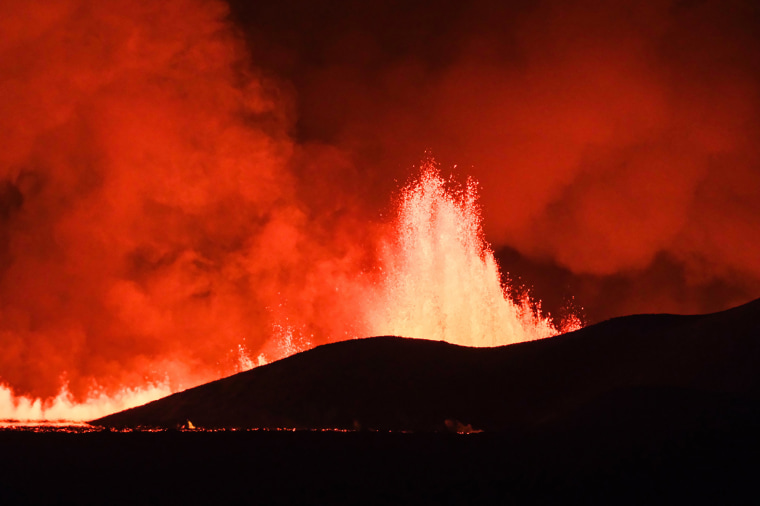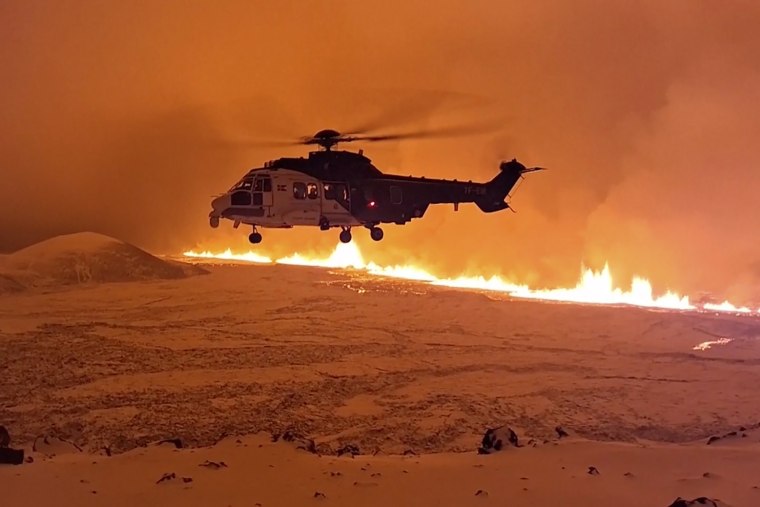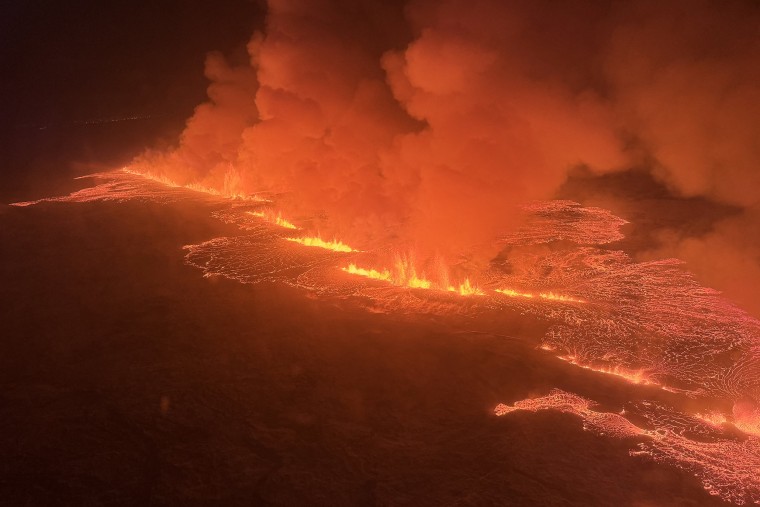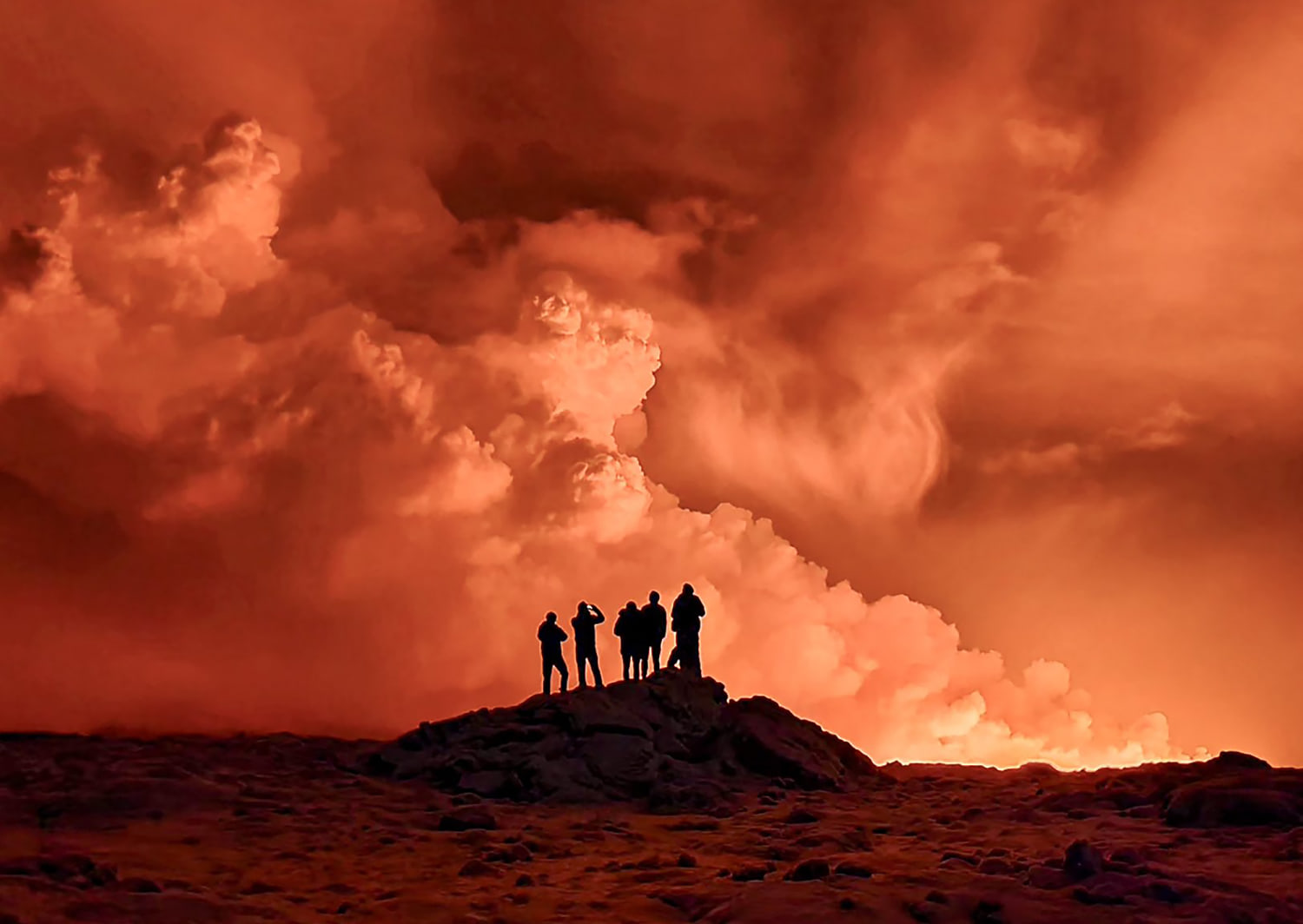Lava continues to spew from a volcano in southwestern Iceland that erupted late Monday, but local officials said Tuesday that it “does not present a threat to life.”
After showing signs of unrest for weeks — including periods in which thousands of small earthquakes rattled the region each day — the volcano, on the island’s Reykjanes Peninsula, began belching fountains of lava and sending smoke billowing into the dark sky overnight.
On Tuesday morning, the Icelandic Meteorological Office said the intensity of the eruption was decreasing. Government officials also said lava from the eruption appears to be flowing away from the nearby town of Grindavík, an encouraging sign that homes and other critical infrastructure there may emerge unscathed.

Early estimates suggest that lava flows have slowed to about one-quarter of what they were at the beginning of the eruption, according to the meteorological office. Local officials also said that reconnaissance flights indicated the lava is spewing to a maximum height of around 100 feet (30 meters) — lower than the roughly 300 feet (90 meters) observed at the outset of the eruption.
But it’s too soon to tell what the slowdown really means.
“The fact that the activity is decreasing already is not an indication of how long the eruption will last, but rather that the eruption is reaching a state of equilibrium,” the Icelandic Meteorological Office said in an update online. “This development has been observed at the beginning of all eruptions on the Reykjanes Peninsula in recent years.”
Prime Minister Katrín Jakobsdóttir told the Icelandic public broadcaster RUV on Tuesday that authorities are closely monitoring the situation.
“This is a huge eruption,” she said. “We have yet to see how it will develop throughout the day.”
Jakobsdóttir added that lava flows are not currently threatening the town of Grindavík or a nearby power plant.
“But we also know that the flow of lava can change the surrounding landscape, so this can change with short notice,” she said.

More than 3,400 people were evacuated from the fishing town of Grindavík in early November. It’s unlikely that residents will be able to return anytime soon, but Jakobsdóttir said the government is working to meet housing needs for those affected.
The eruption opened up a 2.5-mile-long fissure, sending thousands of cubic feet of lava across the landscape. According to the Icelandic Meteorological Office, one-third of the fissure remains active and roughly five eruption vents are spread along its length.
Local officials said the area is closed to all traffic as emergency responders and scientists assess the situation.
“People are strongly warned not to approach the area for their own safety and in order not to disrupt traffic and the work of responders,” several Icelandic government offices and ministries said in a joint statement.
The meteorological office said the volcanic plume is now drifting east. Volcanic gases and ash may be noticeable in the Vestmannaeyjar archipelago and around the capital city of Reykjavik Tuesday and into Wednesday, officials said, but other populated areas may be spared.

There have been no disruptions to flights in and out of the country’s Keflavik International Airport, the Icelandic government said.
The United States Embassy in Iceland said airlines will continue to monitor ash forecasts from the meteorological office and its partners.
“If you have pending travel plans, contact your airline or check their website for information,” the embassy said Tuesday in an alert.
A volcano on the Reykjanes Peninsula last erupted in 2021, after scientists observed similarly heightened seismic activity in the region.
Iceland is one of the most active volcanic hot spots in the world because it sits atop two tectonic plates that are slowly moving away from each other. There are around 30 active volcano systems in the country, according to the meteorological office.
In 2010, a series of major eruptions at the Eyjafjallajökull volcano, located southeast of the current eruption, produced an enormous ash cloud that blanketed the area, causing extensive air travel cancellations across Europe.
Source: | This article originally belongs to Nbcnews.com










